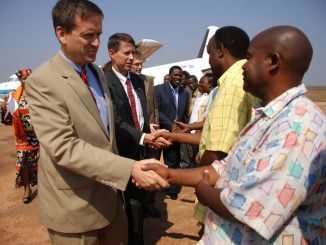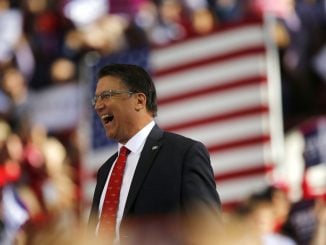RALEIGH Historically and predominantly a rural, Christian state, N.C. this year topped ten million residents, doubling the state’s population since 1980. The boom is driven mostly by rapidly growing pockets of urban-ism where universities and high-tech industry have drawn crowds of young, active people and northerners over the past 30 years seeking the Carolina pace of life, beautiful landscapes and business-friendly environment. North Carolina recently replaced Georgia as the nation’s ninth largest economy and is ranked as the tenth fastest-growing economy in the nation. Those rankings, along with consistently being among the top places in the country to live and start a business, have led to an influx of newbies to the Old North State that has changed the social dynamics, politics, even food, of this place.The importance of North Carolina in the 2016 elections is not lost on either party, with a dozen interest groups from outside the state pouring an estimated $4 million into the governor’s race and at least one nominee for president here every week. A state that picked President Obama in 2008 and Mitt Romney in 2012, N.C. has gone from blue to red to purple and is widely considered to be ground zero in the 2016 presidential election. As North Carolinians consider their role in what is being billed as the election of a lifetime, the North State Journal is launching a special election that digs deep and elevates the statewide conversation on the issues that most directly impact our communities. In coming weeks, we will examine the state economy, education system, healthcare system, and the civil and judicial climate of North Carolina. This week we begin with a picture of just who we are as a state. In 2015, North Carolina became the ninth largest state in the nation. There are a total of 10,042,802 people living in North Carolina, a 5 percent increase since 2010 and more than 50 percent increase since 1980. The dichotomy of rural and urban, conservative and liberal, young and old, gives the Old North State it’s distinctive flavor, earning a worldwide reputation for being on the leading edge of the South, yet deeply rooted in tradition. AgeN.C.’s population skews slightly older, with 22 percent of people under 18, compared to 25 percent nationwide. Twelve percent of Americans are over age 65 while 15 percent of North Carolinians are. There are 100,000 more Millennials in N.C. than Baby Boomers, but nearly 200,000 people over 80.GenderThere are slightly more female North Carolinians than male. Half of one percent are transgender. Approximately 2.7 percent of N.C. residents consider themselves to be lesbian, gay or bisexual. All of these figures are in line with national statistics.Race Of North Carolinians, 71 percent are Caucasian, while 22 percent are African American. Nine percent are Hispanic or Latino, which is a fifty percent increase in that population in the state since 2000. Eleven percent of N.C. households speak a language other than English.Religion Just more than 3/4 of the state population reports to be Christian, compared to 70 percent nationwide. Twenty percent of North Carolinians are atheist, agnostic or non-religious. Approximately one-third of millennials say they do not consider themselves associated with any faith.Military N.C. has the third largest military population of any state, with two percent participation. Approximately 1.3 percent are active duty or reserves, compared to .5 percent of the total U.S. population. N.C. is home to seven installations that represent 10 percent of the economy, 540,000 jobs, and $48 billion in gross state product.
Related Articles

Article
Trump to nominate ex-congressman to lead international aid agency
WASHINGTON, May 10 (Reuters) – President Donald Trump will nominate former congressman Mark Green to head the U.S. Agency for International Development, the White House said in a statement on Wednesday. Green is a former […]

Article
Trump revokes Washington Posts campaign press credentials
WASHINGTON – Republican Donald Trump said on Monday he will no longer issue press credentials to the Washington Post, stopping the publication from gaining access to press areas at his presidential campaign events. His next […]

Article
McCrory looks toward the future
CHARLOTTE At Tuesday’s Rotary Club meeting in Charlotte, former Gov. Pat McCrory was honored with the Excellence in Leadership Award. The Rotarian honor recognizes excellence in industry and public service leaders with high ethical […]
